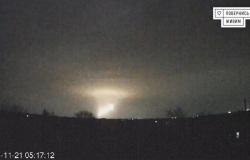An international team of researchers has developed a laser system capable of simultaneously detecting several polluting gases in the air in a few seconds. The technology uses special optical fibers and pressurized gases to generate ultra-precise laser beams. The first tests show rapid and reliable detection of CO2 and SO2, two major gases responsible for global warming and atmospheric pollution.
Air pollution kills 7 million people a year according to the World Health Organization and is one of the biggest challenges of our century. Advanced spectroscopic tools for environmental gas detection, capable of accurately monitoring multiple gases in real time and with high sensitivity, are therefore of utmost importance to the world.
An innovative optical system to track pollutants
The team led by Associate Professor Christos Markos at DTU Electro in Denmark presented in Nature Communications a new method for synthesizing several narrow, precisely and independently tuned optical spectral lines in the near-infrared and mid infrared.
The laser was combined with photo-acoustics and the researchers demonstrated the ability of a robust system to monitor multiple gases in real time and with high sensitivity. The system developed is based on the emerging technology of gas-filled hollow-core anti-resonant fibers, the authors of which are among the world leaders. Two different hollow core fibers filled with active gases are combined in a cascade configuration generating strong laser pulses targeting carbon dioxide and sulfur dioxide.
The device relies on two hollow optical fibers filled with gas which act as ultra-selective filters. The first fiber contains methane under pressure, while the second contains hydrogen. This configuration makes it possible to generate laser rays perfectly adapted to identify the specific “signatures” of the gases sought in the air.
Rapid and simultaneous detection of pollutants
The major advantage of the system lies in its ability to analyze several gases at the same time, where current technologies must detect them one by one. The researchers emphasize that “each laser beam specifically targets a gas without interference with the other molecules present”.
The advantages of the device:
• Analysis of several gases in seconds
• Increased precision thanks to ultra-thin lasers
• Greater reliability than existing systems
Concrete applications for the environment
Such a system can be used in heavy industry and shipping to monitor harmful emissions and greenhouse gas emissions. This is part of new EU regulations that set a 2030 target of reducing net greenhouse gas emissions by at least 55% compared to 1990 levels.
The first tests demonstrated the effectiveness of the system in detecting CO2 and SO2. These two gases play a central role in air quality and climate change. CO2 is the main human-made greenhouse gas, while SO2 contributes to acid rain and urban pollution.
Areas of application:
• Monitoring of pollution in the city
• Control of industrial discharges
• Monitoring atmospheric changes
An adaptable tool for the future
The system can be modified to detect other types of gases by simply adjusting the lasers’ parameters. Researchers are working to reduce the size of the device to make it transportable in the field.
This new laser technology marks a breakthrough in the detection of atmospheric gases. Its ability to measure multiple pollutants simultaneously offers increased opportunities for environmental protection and the fight against climate change.
Article : « Synthesizing gas-filled anti-resonant hollow-core fiber Raman lines enables access to the molecular fingerprint region » – DOI: https://www.nature.com/articles/s41467-024-52589-8#MOESM5





